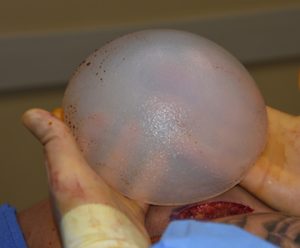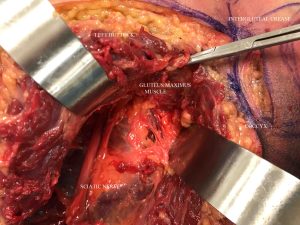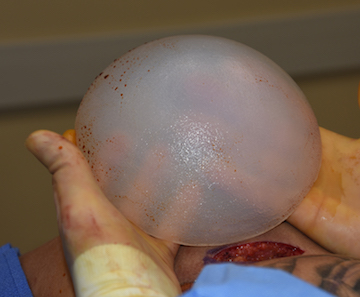

The intramuscular buttock implant technique has gained traction over the past decade with the recognition of its lower complication rates. It is the most unique of all body implant pocket locations because it is developed at the location of a true natural plane. Rather it is an ‘artificial’ tissue place as the name implies, intramuscular, as opposed the prefix sub before muscular. As a result it is a difficult technique to learn and is also why, when not done deep enough, muscle atrophy above the implant occurs and some or all of the implant ends up in the subfascial plane/pocket.
In the March 2022 issue of the Plastic and Reconstructive Surgery journal an article on this topic was written ‘Buttocks Volume Augmentation with Submuscular Implants: 100 Case Series.’ In this paper the authors describe their experience using a submuscular technique for smooth round silicone gel buttock implant placement. A tumescent local anesthesia infiltration approach is used for both the incisional and submuscular pocket areas. Through asymmetrically placed bilateral paragluteal incisions (preserving the intergluteal fold) blunt dissection is used to reach the submuscular space where it is initially identified digitally and then instrument enlarged. The implants were inserted using a funnel device. The average implant volume placed was 325ccs. (225cc to 560ccs)
Complications of some form occurred in 30% of the patients. The most common complication was delayed incisional healing (11%) followed by implant flipping (7%), buttock asymmetry (4%), and hematoma. (2) No infections were reported. At up to 3 years followup no patient has requested removal or implant replacements.
Submuscular implant placement is done in a deep plane between the gluteus maximus and medius muscles. With a thick muscle layer maintained there is less risk of muscle atrophy which is well known to occur with the intramuscular technique. Implant volumes are very similar to that used in intramuscular pockets. (I am surprised that a implant as large as 560ccs could be placed but this appears to be an outlier)

Dr. Barry Eppley
Indianapolis, Indiana



